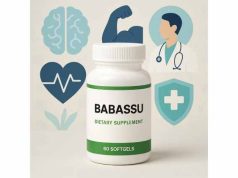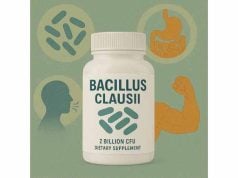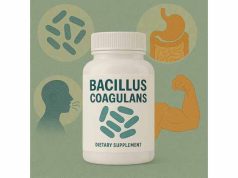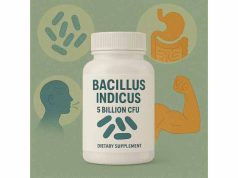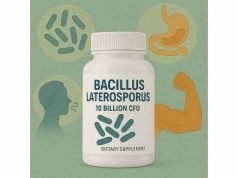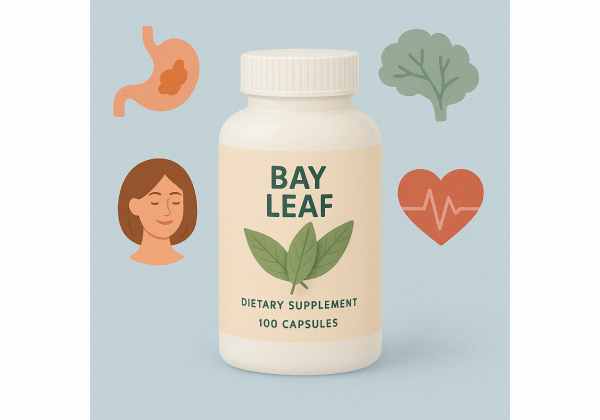
Did you know that a single bay leaf can transform a dish’s aroma and may support your health? Whether used in soups, teas, or extracts, bay leaf (Laurus nobilis) is more than just a culinary staple. From digestive wellness and blood sugar support to its traditional use for immunity, bay leaf continues to fascinate both chefs and herbalists. This guide delivers clear, evidence-based answers to the top questions about bay leaf’s benefits, best uses, safe dosage, and possible side effects—helping you confidently add this ancient herb to your routine. Here’s what you’ll learn in each section: bay leaf’s origins and traditional roles, how it works in the body, key health benefits, safety and interactions, dosing guidelines, and frequently asked questions for practical everyday use.
Key Takeaways
- Bay leaf supports digestion, may help regulate blood sugar, and contains powerful antioxidants.
- It’s commonly used in cooking, herbal teas, and as a supplement extract.
- The typical safe daily amount is 1–2 whole leaves (in food), or standardized doses in supplements.
- Side effects are rare but can include allergies or digestive upset if consumed whole or in large amounts.
- Always remove whole leaves from dishes before serving to prevent choking or digestive issues.
Table of Contents
- Bay Leaf Overview: History, Culinary and Wellness Roots
- Bay Leaf Science: Plant Compounds and How It Affects the Body
- Health Benefits of Bay Leaf: Uses for Digestion, Blood Sugar, and Immunity
- Bay Leaf Safety: Risks, Allergies, and Interactions Explained
- Bay Leaf Dosage: Forms, How to Use in Food and Supplementation
- Bay Leaf FAQ: Answers to Top Questions
Bay Leaf Overview: History, Culinary and Wellness Roots
Bay leaf, scientifically known as Laurus nobilis, is a fragrant, evergreen leaf from the Mediterranean bay laurel tree. Its glossy green appearance and spicy, aromatic flavor have earned it a place in kitchens and herbal medicine cabinets for centuries. But what exactly is bay leaf, and what roles has it played across cultures and generations?
Historical Significance and Cultural Uses
- Ancient Origins: Bay leaf has a long legacy—dating back to Greek and Roman times, where it symbolized victory, wisdom, and protection. Laurel wreaths, made from bay branches, crowned emperors, poets, and athletes, marking their achievements and linking bay leaf to celebration and power.
- Traditional Medicine: Herbalists have valued bay leaf for its warming, digestive, and cleansing properties. It was often steeped as a tea or infused in oils to help ease stomach discomfort, headaches, colds, and joint pain.
- Culinary Staple: In modern kitchens, bay leaf is the backbone of flavor in soups, stews, sauces, and rice dishes. Its subtle, slightly bitter taste enhances savory meals, while its essential oils are released during slow cooking.
Types and Sources
- True Bay Leaf (Laurus nobilis): The classic Mediterranean species. Glossy, oval, dark-green leaves.
- Other Bay Types: Indian bay leaf (Cinnamomum tamala), California bay (Umbellularia californica), and Indonesian bay (Syzygium polyanthum) are related but differ in aroma and chemical makeup.
- Dried vs. Fresh: Dried bay leaves are most common for cooking and supplements, offering a concentrated flavor and longer shelf life.
Bay Leaf in Wellness and Ritual
Bay leaf is more than a seasoning. In many cultures, it’s burned as incense for cleansing, tucked into pouches for good luck, or brewed into tea for calming nerves. In Ayurveda and Traditional Chinese Medicine, bay leaf is believed to “stimulate digestion,” “clear dampness,” and “move Qi” (energy).
Modern Bay Leaf Supplements
With renewed interest in herbal wellness, bay leaf is now found in capsules, tinctures, and extracts—standardized for specific plant compounds. These supplements are marketed for digestive health, blood sugar management, antioxidant support, and immune balance.
Taste, Aroma, and Cooking Tips
- Bay leaf adds depth but is rarely eaten directly due to its tough texture.
- Always remove whole bay leaves before serving, as they can pose a choking risk or irritate the digestive tract if swallowed.
Nutritional Profile
Bay leaf contains a modest amount of vitamin A, C, folate, and minerals like calcium, magnesium, and iron. However, the main health properties come from its volatile oils and polyphenol antioxidants—more on these in the next section.
Summary Table: Bay Leaf Fast Facts
| Feature | Details |
|---|---|
| Botanical name | Laurus nobilis |
| Plant family | Lauraceae |
| Key nutrients | Antioxidants, vitamin A, iron, calcium |
| Main uses | Culinary spice, teas, herbal medicine |
| Modern forms | Whole leaf, powder, extract, capsules |
| Aroma/flavor | Spicy, aromatic, slightly bitter |
Bay leaf stands out as a culinary classic with time-honored uses for digestion, relaxation, and overall wellness.
Bay Leaf Science: Plant Compounds and How It Affects the Body
Why do chefs and herbalists value bay leaf so highly? The answer lies in its complex mix of essential oils, polyphenols, and minerals. Let’s unpack the science behind bay leaf and how it works in the human body.
Key Plant Compounds in Bay Leaf
- Essential Oils: Bay leaf contains 1–3% essential oil by weight, mostly eugenol, cineole, linalool, and sabinene. These oils are responsible for its aroma, flavor, and many biological actions.
- Polyphenols: Includes quercetin, kaempferol, catechins, and caffeic acid—powerful antioxidants that help counteract free radicals and oxidative stress.
- Tannins and Flavonoids: Support anti-inflammatory and antimicrobial properties, and may aid in calming digestive irritation.
- Trace Minerals: Small amounts of calcium, iron, potassium, and magnesium.
How Bay Leaf Compounds Act in the Body
- Antioxidant Defense: Polyphenols and essential oils neutralize oxidative stress, protecting cells from damage. This is key for immune health, aging, and chronic disease prevention.
- Anti-Inflammatory Properties: Eugenol, the main volatile oil, reduces markers of inflammation and may ease minor aches or muscle discomfort when bay leaf tea or infused oil is used.
- Digestive Support: Cineole and other oils relax smooth muscle, promote healthy bile flow, and help relieve gas, cramping, or bloating.
- Blood Sugar Regulation: Some studies show bay leaf may help moderate glucose spikes and improve insulin function—likely due to its polyphenols and fiber.
- Antimicrobial Effects: Bay leaf’s essential oils show activity against bacteria, fungi, and some food-borne pathogens—supporting both gut health and food safety.
Bay Leaf Preparation and Bioavailability
- Whole vs. Powdered vs. Extract: Dried whole leaves slowly release oils during cooking. Powdered leaf or standardized extracts provide more concentrated, measurable doses for supplement use.
- Synergy with Other Herbs: Bay leaf often works best in combination with warming herbs (like ginger or black pepper), which may enhance absorption and digestive action.
Modern Research and Applications
- Bay leaf extracts are being studied for their effects on inflammation, blood sugar control, and even cognitive support.
- In traditional systems, bay leaf is used in poultices, mouth rinses, and inhalations to address a wide range of minor ailments.
Safety of Plant Compounds
- The main active ingredients in bay leaf are safe in culinary doses, but concentrated oils or extracts should be used as directed to avoid side effects.
- Swallowing whole, unchewed leaves is discouraged, as their stiff edges can irritate or even perforate the digestive tract.
Aromatic Chemistry: Why Bay Leaf Smells So Good
The essential oils in bay leaf not only add to its culinary appeal but also contribute to relaxation and a sense of comfort—explaining its role in stress relief rituals and home remedies.
Quick Comparison: Bay Leaf vs. Other Culinary Herbs
| Herb | Key Oils | Main Benefit | Typical Use |
|---|---|---|---|
| Bay leaf | Eugenol, cineole | Digestion, antioxidant | Soups, stews |
| Thyme | Thymol | Antimicrobial, lung health | Roasts, infusions |
| Rosemary | Cineole, camphor | Memory, circulation | Roasts, teas |
| Basil | Linalool | Calm, anti-inflammatory | Salads, sauces |
In summary, bay leaf’s unique blend of essential oils and antioxidants underlies both its culinary magic and its diverse health-supporting effects.
Health Benefits of Bay Leaf: Uses for Digestion, Blood Sugar, and Immunity
Bay leaf isn’t just for flavor—it’s a traditional remedy now backed by emerging scientific support. Here are the main evidence-based benefits and real-world uses for bay leaf in everyday wellness:
1. Digestive Health and Bloating Relief
- Bay leaf is well-known as a carminative, meaning it helps reduce gas and soothe indigestion. The essential oils relax gut muscles, promote natural movement, and may relieve cramping or fullness after heavy meals.
- Traditional teas and decoctions with bay leaf are still popular for calming nausea or upset stomach—especially after rich or fatty foods.
2. Antioxidant and Anti-Inflammatory Support
- The polyphenols and volatile oils in bay leaf act as antioxidants, neutralizing harmful free radicals and reducing inflammation. This supports immune health, healthy aging, and may lower the risk of chronic diseases.
- People with joint discomfort sometimes use bay leaf externally as a warm compress or in a topical oil.
3. Blood Sugar and Metabolic Balance
- Early research suggests bay leaf may support healthy blood sugar levels by improving insulin sensitivity and moderating glucose spikes after meals.
- In some studies, regular use of bay leaf extract or powder helped lower fasting blood sugar and cholesterol. This effect appears strongest in those with borderline or elevated blood sugar.
4. Immune System and Infection Defense
- Bay leaf’s essential oils have antimicrobial properties. They help guard against some common bacteria and fungi, supporting gut health and overall immune balance.
- Herbalists sometimes recommend bay leaf teas or infusions for colds, coughs, or respiratory irritation, though evidence is limited and more research is needed.
5. Stress and Mood Support
- The pleasant aroma of bay leaf, especially when used in teas or baths, may promote relaxation and ease stress.
- Aromatherapy traditions use bay leaf oil for mental clarity and emotional balance.
6. Additional Wellness Benefits
- Mouth and Gum Health: Bay leaf extracts have been used in natural mouth rinses to freshen breath and reduce oral bacteria.
- Skin and Hair Care: Infusions or oils are sometimes applied topically for minor irritation, though results are largely anecdotal.
Practical Applications
- Culinary Use: The most reliable way to benefit from bay leaf is regular culinary use—in soups, stews, rice, beans, and sauces. Cooking releases the oils, making the healthful compounds easier to absorb.
- Herbal Teas: Simmer 1–2 dried leaves in hot water for 5–10 minutes, strain, and sip for gentle digestive and stress support.
- Supplements: Bay leaf capsules, powders, or standardized extracts provide a more concentrated, measured intake. Always follow manufacturer instructions for best results.
Who Might Benefit Most?
- Those with digestive discomfort, sluggish digestion, or mild bloating.
- People looking for natural antioxidant and immune support.
- Individuals seeking to maintain healthy blood sugar levels as part of a balanced diet and lifestyle.
Evidence Strength
While much of bay leaf’s reputation comes from traditional use and animal studies, more human clinical research is underway. So far, its benefits for digestion, oxidative stress, and blood sugar management appear most promising.
Limitations and Cautions
- Bay leaf is not a replacement for prescribed medications.
- Large doses or essential oil ingestion is not recommended without professional supervision.
Summary Table: Bay Leaf’s Top Benefits
| Benefit | How It Works | How to Use |
|---|---|---|
| Digestive Health | Relaxes gut, reduces gas | In food, tea |
| Antioxidant | Polyphenols fight free radicals | In food, supplements |
| Blood Sugar | Supports insulin, moderates glucose | Powder, extract |
| Immunity | Antimicrobial oils | Tea, inhalation |
| Stress Relief | Aromatic oils, relaxation | Tea, aromatherapy |
Bay leaf’s versatility as a culinary and wellness herb makes it easy to add to your daily routine for a range of gentle, natural health benefits.
Bay Leaf Safety: Risks, Allergies, and Interactions Explained
Bay leaf is generally safe when used in food, but it’s important to understand the potential side effects, allergy risks, and drug interactions that come with both culinary and supplemental forms. Here’s what every user should know before adding bay leaf to their wellness regimen.
Digestive Safety and Whole Leaf Warnings
- Choking and Digestive Irritation: Whole bay leaves remain stiff and fibrous, even after cooking. Swallowing a whole or large piece can irritate or even puncture the digestive tract. Always remove bay leaves from dishes before serving.
- Digestive Discomfort: Rarely, some people may experience mild stomach upset, such as nausea, bloating, or diarrhea, especially if they consume high doses or concentrated extracts.
Allergic Reactions and Sensitivity
- Contact Allergies: Handling bay leaves may cause minor skin irritation in sensitive individuals, resulting in redness or itching.
- Food Allergies: True allergy to bay leaf is rare, but those with allergies to other plants in the Lauraceae family (like cinnamon or sassafras) may have a higher risk.
- Symptoms: Signs of an allergic reaction can include itching, rash, swelling of lips or tongue, or in rare cases, difficulty breathing. If any of these occur, discontinue use and seek medical attention promptly.
Drug and Supplement Interactions
Bay leaf may interact with certain medications or supplements, so consult your healthcare provider if you take:
- Diabetes Medications: Bay leaf can enhance blood sugar-lowering effects, potentially leading to hypoglycemia if taken alongside diabetes drugs. Blood glucose should be monitored closely.
- Sedatives or CNS Depressants: Due to mild calming properties, bay leaf may theoretically increase drowsiness when used with sedatives or sleep aids, though this is rare in culinary amounts.
- Surgery and Bleeding: There is some evidence that bay leaf could slow blood clotting. It’s generally advised to stop supplements at least 2 weeks before surgery and consult your doctor if you’re taking anticoagulants.
Safety for Special Populations
- Pregnancy and Breastfeeding: Culinary amounts are considered safe. However, medicinal doses or concentrated supplements should be avoided due to lack of safety data.
- Children: Bay leaf used in food is safe for children, but supplements are not recommended without pediatric guidance.
- Older Adults: No specific risks are known for older adults, but those with chronic health issues or taking multiple medications should use caution.
Essential Oil Caution
- Concentrated Oil: Never ingest bay leaf essential oil. Topical use should always be diluted, and even then, test a small area first to check for irritation.
- Inhalation Risks: While the aroma is soothing, concentrated vapor or essential oil inhalation is not recommended for people with asthma or severe respiratory sensitivity.
Toxicity and Overdose
- Bay leaf toxicity is extremely rare. Symptoms of excessive intake might include digestive upset, drowsiness, or, with large quantities, more severe digestive tract irritation.
- Using bay leaf as directed in recipes, teas, or standardized supplements keeps intake well within the safe range.
Best Practices for Safe Use
- Stick to recommended dosages, especially when using supplements or extracts.
- Remove whole leaves before serving or eating.
- Choose products from reputable suppliers to ensure purity and correct plant species.
Summary Table: Bay Leaf Safety Overview
| Concern | Risk Level | How to Avoid Problems |
|---|---|---|
| Choking/Digestive | Moderate | Remove whole leaves, chew thoroughly |
| Allergies | Low | Discontinue at first sign of reaction |
| Drug Interactions | Low-Moderate | Consult with your doctor |
| Essential Oil Toxicity | Moderate | Do not ingest oil; dilute for skin |
| Overdose | Rare | Avoid excessive amounts |
Bay leaf is safe for most people in the kitchen and as a gentle herbal tea. As with any supplement, use caution, start small, and consult a healthcare provider for long-term or high-dose use.
Bay Leaf Dosage: Forms, How to Use in Food and Supplementation
Choosing the right dosage and form of bay leaf is essential for both safety and benefit. Whether you’re using whole leaves, powdered supplements, or extracts, this section will help you confidently incorporate bay leaf into your daily routine.
Culinary Dosage: Whole and Dried Leaves
- Typical Culinary Use: Most recipes call for 1–2 dried bay leaves per dish (for 4–6 servings). The leaves are simmered to release flavor and active compounds, then removed before serving.
- In Food: This “culinary dose” is considered safe and effective for daily use. It delivers a subtle, pleasant flavor and low, beneficial amounts of antioxidants and essential oils.
Herbal Tea and Decoction
- Bay Leaf Tea: Steep 1–2 dried leaves (or ¼–½ teaspoon crushed) in hot water for 5–10 minutes, then strain. Drink up to two cups per day.
- Combination Teas: Bay leaf is often blended with ginger, cinnamon, or cardamom for enhanced digestive support and taste.
Supplement and Extract Dosage
- Capsules/Tablets: Typical standardized supplement doses range from 500–1,000 mg per day, based on extract potency (often 10:1). Always follow the manufacturer’s recommended serving size.
- Liquid Extracts/Tinctures: Common dosages are 1–2 mL, taken 1–3 times daily, diluted in water. Check for alcohol content and use an alcohol-free extract if desired.
- Powdered Bay Leaf: Start with 250–500 mg per day, increasing slowly if needed, and never exceed 1,000 mg daily unless advised by a healthcare provider.
Timing and Duration of Use
- With Food: Bay leaf is best taken with meals, whether in culinary form or as a supplement, to aid in digestion and minimize stomach discomfort.
- Length of Use: Culinary and tea forms can be used daily. For supplements or extracts, use as directed, typically for a few weeks at a time before taking a break.
Practical Tips for Incorporation
- Add whole leaves early in the cooking process for maximum extraction of flavor and nutrients.
- When using powdered bay leaf in smoothies or spice blends, start with a small amount to avoid bitterness.
- For teas, experiment with combinations to suit your taste and digestive needs.
Special Considerations for Dosing
- Children and Elderly: Use only culinary amounts unless otherwise directed by a healthcare provider.
- Health Conditions: Those with diabetes, on anticoagulants, or with chronic digestive issues should consult their healthcare provider before supplementing.
Signs of Too Much Bay Leaf
- Unusual digestive discomfort, drowsiness, or skin rash.
- If any adverse symptoms develop, discontinue use and consult a health professional.
Bay Leaf Dosage Quick Guide
| Form | Typical Dose | Frequency | Notes |
|---|---|---|---|
| Whole leaf (in food) | 1–2 leaves per dish | As desired | Remove before eating |
| Tea | 1–2 leaves per cup | 1–2x daily | Steep and strain |
| Capsule/Tablet | 500–1,000 mg extract | 1x daily | Follow label directions |
| Liquid Extract | 1–2 mL | 1–3x daily | Dilute in water |
| Powder | 250–500 mg | 1–2x daily | Mix with food, avoid excess |
Using bay leaf is simple and safe when following these evidence-based guidelines for dose and timing.
Bay Leaf FAQ: Answers to Top Questions
What are the main health benefits of bay leaf?
Bay leaf supports digestion, provides antioxidant protection, and may help regulate blood sugar levels. It is traditionally used for bloating, minor stomach upset, and overall immune support, both in food and as an herbal tea.
Is it safe to eat bay leaves?
Whole bay leaves should never be eaten, as they are stiff and can cause choking or digestive irritation. Always remove whole leaves from food before eating. Ground or powdered bay leaf is safe in moderate culinary or supplement amounts.
How much bay leaf should I take daily?
For most people, 1–2 whole dried leaves in cooking or tea is safe daily. Standardized supplement extracts are typically used in 500–1,000 mg daily doses. Always follow product guidelines and consult a healthcare provider if using higher doses.
Does bay leaf interact with medications?
Bay leaf may enhance the effect of diabetes drugs and anticoagulants. If you’re on these medications, monitor closely and consult your healthcare provider before starting bay leaf supplements.
Can bay leaf help lower blood sugar?
Some studies suggest bay leaf may support healthy blood sugar and improve insulin sensitivity, especially in people with borderline or elevated glucose. It should be used as a complement to—not a substitute for—standard medical care.
Are there any side effects of bay leaf?
Bay leaf is well tolerated by most. Rare side effects include mild digestive upset or allergy symptoms. Swallowing whole leaves can be hazardous and should always be avoided.
Is bay leaf safe during pregnancy?
Bay leaf is considered safe in food, but pregnant or breastfeeding individuals should avoid supplements and high doses due to insufficient safety data.
Disclaimer:
This article is for educational purposes only and is not intended as a substitute for professional medical advice, diagnosis, or treatment. Always consult a qualified healthcare provider with any questions about your health or before starting any new supplement.
If you found this article helpful, please share it with friends or family on Facebook, X (formerly Twitter), or your favorite platform—and follow us on social media for more in-depth health guides. Your support helps us continue to deliver trustworthy, science-backed content!


